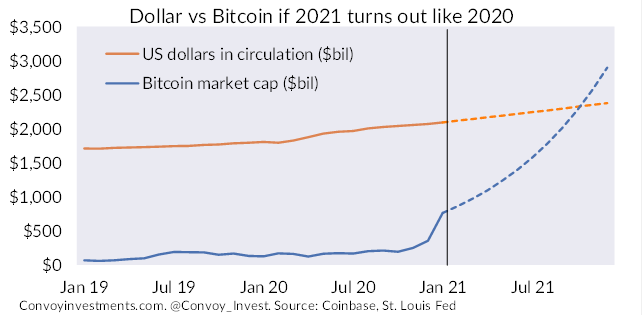
Quite good: Is bitcoin growth sustainable
| Is bitcoin growth sustainable | Up btc result 2015 jobriya |
| Is bitcoin growth sustainable | Bitcoin mining pool 2013 |
| Is bitcoin growth sustainable | Should i buy bitcoins right now |
Cryptocurrency Unmasked, Part 2: Are Cryptocurrencies Sustainable?
In Cryptocurrency Unmasked, Part 1: Are Cryptocurrencies Secure?, we examined the long-term security of Bitcoin. The main issue of concern was the increasing consolidation of miners, which could lead to a small group controlling the system. In Part 2, here, we examine the long-term sustainability of Bitcoin; and in an upcoming Part 3, we examine the long-term scalability of Bitcoin.
From an industrial standpoint, the supply side of the Bitcoin network is composed of nodes and miners (seeFigure 1, “A Primer on High-Level Cryptocurrency Network Architecture”).Nodes are key to the privacy, anonymity, and general blockchain-accounting of the Bitcoin network, and key to facilitating transactions between parties.
Miners work to solve cryptographic riddles and add new blocks to the blockchain. Each block contains new coins, plus a number of unconfirmed transactions. Miners’ revenues come from these two sources: (1) the transaction fees paid by users, which resulted in January 2018 in ~ $7 million of revenue per day; and (2) the reward granted by the system in the form of newly minted Bitcoins, whose value is a function of the market. In January, miners earned rewards of ~$32 million per day from new coins (see Figure 2. “Average dailybitcoin rewards for miners”).
ECONOMICS OF SOLVING A BLOCK
In January, the average revenue per transaction was ~$112—~$89 for the coin reward, and ~$23 in fees. Given an average of 1,750 transactions per block, the total reward for solving a block was ~$196,000.
By design, when the Bitcoin system was set up in 2009, the last Bitcoin was projected to be mined in 2140. Well before that, however, in 2029, the number of coins will be eight times less than it is now, and will be increasingly marginal over the longer term. Today, 12.5 Bitcoins are granted to a miner who solves a block; in 2021, the number will be 6.25; in 2025, the number will be 3.125; and, in 2029, just 1.5625. Clearly, revenues from the reward of mining new coins will tend to zero, as the number of remaining coins available in the system declines.
Miners’ costs are a combination of energy consumption and the purchase of the software/hardware equipment (and, of course, their time). Because the cryptographic riddle becomes more and more complex (Bitcoin is designed so that miners solve one block every ~10 minutes), miners need to grow their computational power at least at the same rate as the system’s increase in complexity, otherwise they will reduce the probability of solving blocks, and thus see a dip in revenues and profits. Increased computational power, however, has a cost, and it also means increased energy consumption, which definitely puts pressures on profits.
The cost/reward ratio is affected by the probability of solving a block. If the probability of solving a block is too low, the cost/reward ratio could be higher than 1 (cost exceeds rewards). The probability of solving a block is theoretically equal to the ratio between the computational power of a certain miner and the total network computational power (hash rate). Today, costs for the top miners total about 30 percent of the rewards.
If the difficulty of the cryptographic riddles increases at the same rate as it has in the past two years, and the bitcoin currency value and transaction fees remain as they are today—which won’t necessarily be true—the cost/reward ratio could be higher than 1 (cost exceeds reward) by 2025. (The reward, of course, is a function of the free market value of the coin, which has fluctuated wildly in the last year.)
ECONOMICS OF BUY-SELL TRANSACTIONS
As mining rewards diminish, revenues from transaction fees (as people buy and sell coins) will gradually replace new-coin rewards (see Figure 3 “A simple transaction case: Alice sends Bitcoin to Bob”).
However, the current math on transaction fees alone (without coin rewards) does not look good for miners. With average transaction fees at $20, most accounting estimates miners in the U.S. face an average full cost of $30-$42 (considering industrial energy prices and equipment costs). Chinese miners are in a better position—because of lower energy prices, their full cost is roughly $26-34 per transaction—but still face unfavourable economics. In addition, these estimations may be optimistic, since they are calculated based on the difficulty of solving the cryptographic riddle, and not on the real total computational power available. In our own calculations, considering the daily energy index consumption as a proxy to estimate the computational capacity, we calculate an increase of ~30 percent of the above cost figures ($55-$85 in the U.S. and $45-$66 in China).
If miners are rational agents, they should keep mining until the sum of fees and new coins associated with a block, multiplied by the probability of success in solving the block, equals the total sustained cost (energy consumption + equipment). For the moment, it is clear that large miners are still extremely profitable, mainly because of the rewards they get from new coins, at present market value. But, as the number of coins diminishes, the transaction fees will need to increase to cover costs. That is some ways off, but definitely a major factor in long-term sustainability.
In the last four months, for example, the transaction volume has steadily decreased from the peak reached at the beginning of December 2017. If this trend continues, it will definitely pose a major threat to the long-term sustainability of Bitcoin; if Bitcoin doesn’t circulate, its value will diminish over time. On the other hand, if Bitcoin becomes a more popular/widespread means of payment, the daily transaction volume should increase—via increase of the average number of transactions per block or increase of the average transaction value. And that leads to the issue of scalability, addressed in Cryptocurrency Unmasked, Part 3.
AUTHORS
Angelo Rosiello and Luca Plotti
Oliver Wyman Ideas App
Oliver Wyman Ideas offers our most recent insights on issues of importance to senior business leaders.





-
-